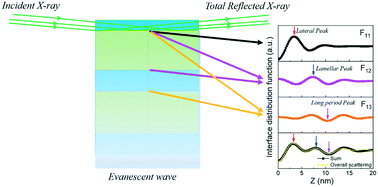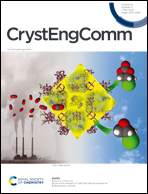A new Fourier transformation method for SAXS of polymer lamellar crystals†
Abstract
For a long time, the scattering of semi-crystalline polymers was assumed to be from the electron density correlation in a lamellar stack. The Fourier transform for scattering can help obtain the correlation function and interface distribution function (IDF), from which the structural information can be obtained. Recently, we found that the scattering of the interface electrons involved in an evanescent wave (Iiev) is the actual origin (Li et al., IUCrJ, 2019, 6, 968–983). It is necessary to develop a new Fourier transform method to obtain structural information. In this study, a method similar to the classical method was proposed; nevertheless, the aim of multiplying q2 or q4 is to reduce the influence of the form factor, while the scattering in Fourier transform should be Iiev, which is roughly equal to the increased scattering during crystallization. The functions obtained by the Fourier transforms Kev and  are similar to the correlation function and IDF in shape, respectively. Nevertheless, both of them are determined mainly by three items, i.e., the self-interference term of the first interface F11, the interference term between the first and second interfaces F12, and the interference term between the first and third interfaces F13, with no relation with the density correlation. They can give information on the lamellar thickness and long period but not on amorphous thickness since both the “self-correlation region” in the so-called “correlation function” and the first peak in IDF are dominated by F11, which does not include the parameter of amorphous thickness. With the revised procedure, the lamellar thickness and long period can be obtained readily from real scattering, whether for a lamellar two-phase system or a lamellar system with a broad thickness distribution. Based on the above-mentioned results, we suggest the removal of the concept of correlation function but the retention of IDF.
are similar to the correlation function and IDF in shape, respectively. Nevertheless, both of them are determined mainly by three items, i.e., the self-interference term of the first interface F11, the interference term between the first and second interfaces F12, and the interference term between the first and third interfaces F13, with no relation with the density correlation. They can give information on the lamellar thickness and long period but not on amorphous thickness since both the “self-correlation region” in the so-called “correlation function” and the first peak in IDF are dominated by F11, which does not include the parameter of amorphous thickness. With the revised procedure, the lamellar thickness and long period can be obtained readily from real scattering, whether for a lamellar two-phase system or a lamellar system with a broad thickness distribution. Based on the above-mentioned results, we suggest the removal of the concept of correlation function but the retention of IDF.  can be regarded as a new IDF, which represents the probability of finding an interface apart from the first interface of a lamellar stack at a distance of Z.
can be regarded as a new IDF, which represents the probability of finding an interface apart from the first interface of a lamellar stack at a distance of Z.

- This article is part of the themed collection: Database Analysis


 Please wait while we load your content...
Please wait while we load your content...